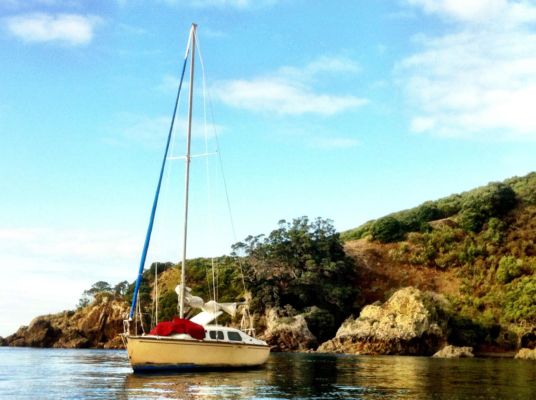Returning from an overseas trip, New Zealanders all know the drill – biosecurity is paramount – and no, you can’t carry on eating that fresh fruit you brought with you once you leave the plane. But how many of us think about biosecurity as we head off to the beach for summer?

If you’re planning to visit any of the many island groups in the Hauraki Gulf Marine Park, then biosecurity is something you do need to keep in mind. There’s no problem if you want to take a bag of apples with you – but if you’re boating in the Gulf you need to be vigilant about hitchhikers.
Auckland researchers Imogen Bassett and Jeff Cook (Auckland Council Biosecurity), Finlay Buchanan (DOC) and James Russell (University of Auckland) discuss the challenges of biosecurity on the Auckland region’s mammal-eradicated islands in a recently article published in the New Zealand Journal of Ecology.

“We review current and past island biosecurity within Tāmaki Makaurau-Auckland’s 1.2 million ha Hauraki Gulf Marine Park (HGMP), which includes 30 island groups, many of which are inhabited. We highlight evolving challenges and changes in island biosecurity focus. Eradication of introduced mammals from islands in the HGMP has restored mammal pest-free status to around 16 islands/island groups, i.e. over half. However, eradications are only part of island biosecurity and require follow-up with on-going vector control, surveillance and incursion response.”
According to the authors, almost 35% of New Zealand’s population lives in or around Hauraki Gulf Marine Park, and while we won’t all be lucky enough to go island-hopping this summer, enough people will be boating and holidaying to make unwitting human-enabled transport of small pest mammals, even smaller ants or very tiny weed seeds, a potential invasion risk.
There are over 400 discrete ‘islands’ in the Gulf, if you count rock stacks, reefs and sand bars and they’re home to one of highest diversities of seabirds in the world. They are refuges for terrestrial birds, reptiles, invertebrates and plants. Hundreds of thousands of people visit the islands each year.
Public awareness is a key tool in protecting the biodiversity of the area and in their report, the authors highlight the “robust social science” that underlies the public relations compaign.
“DOC and Auckland Council address the risk of human transportation of pest species within the HGMP through the ‘Treasure Islands’ campaign. This integrated, joint agency, multi-species approach encompasses islands owned or managed by both central and local government as well as private individuals.”
“The Treasure Islands campaign was conceived as part of the planning process preceding the multi-species mammal eradication on Rangitoto-Motutapu, which of necessity had to consider the reinvasion risk associated with the islands’ many visitors. At its inception the campaign had a rodent and ant focus, but it has subsequently broadened to include weed seeds, plague (rainbow) skinks (Lampropholis delicata) and kauri dieback disease (Phytothphora agathidicida; until recently known as Phytothphora taxon ‘agathis’).
“The campaign also includes messages discouraging the taking of dogs and other pets to pest-free islands. Treasure Islands material provides clear and simple messaging, not only of the problem but also the solutions: ‘check your boat and gear’. A finite list of priority species to check for is also provided, ensuring that the task should remain manageable in people’s minds. The Treasure Islands message is further tailored for transport providers, recreational boaties, island residents and commercial businesses transporting goods to the islands.”
“Communication methods include: signage at entry and exit points to islands, plus all public boat ramps in the HGMP; detection dog visits to freight and passenger vessels; stickers on bait stations and traps; and the ‘Pest-free Warrant’ for commercial and non-commercial vessels and tourism operators. The Pest-free Warrant provides an accreditation system whereby businesses gain a marketing advantage by communicating biosecurity messages to their customers and applying biosecurity measures within their own operations. Over 40 organisations operating in the HGMP currently hold a Pest-free Warrant.”
The campaign, and Auckland Council’s biosecurity mechanisms seem to be working.
“Data on introduced mammal incursions and reinvasions on predator-free islands highlight the role of both swimming and human-transport as vectors, and large inhabited islands elsewhere in the HGMP as reinvasion sources. Since 2000, biosecurity has prevented all but one incursion leading to full reinvasion. We highlight the crucial role of robust social science in supporting successful island biosecurity programmes in populous areas, and propose the Treasure Islands campaign as a case-study for providing insights into potential improvements in future use of social science in such programmes.”
The full article is published in the New Zealand Journal of Ecology and is freely available.
Treasure Islands: biosecurity in the Hauraki Gulf Marine Park (2016)

